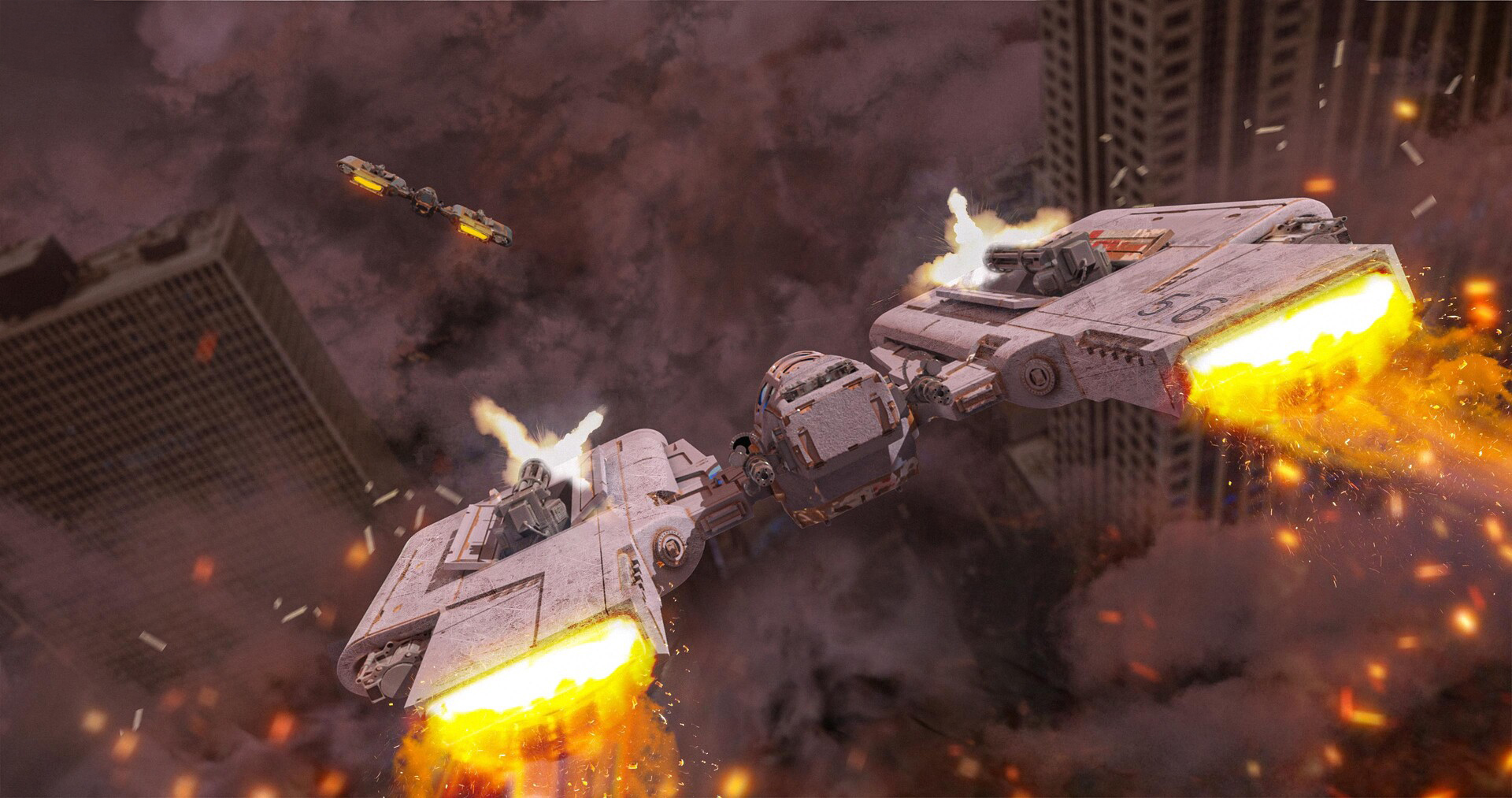

AOA - or Angles of Attack - unfolds in a post-war world run by the last corporations still pretending they know what they’re doing. The rich few live sealed in glass towers high above the clouds, while everyone else (the remaining 99%) scavenges, rebuilds, and fights over whatever scraps fall from the sky. The air is toxic, the rain burns, and humanity’s greatest achievement is now a never-ending drone convoy moving resources from one corporate fortress to another.
You’re a Skyvenger, one of the mercenaries who decided that if the sky’s falling, you might as well make a living shooting it down. Your job is simple: destroy drones, intercept their containers, and bring the loot home before someone else does or before you’re turned into scrap metal.
There are no heroes here. Just pilots, gunners, and survivors.
The planet’s surface? Unbreathable.
The cities? Broken towers, floating junkyards, acid clouds.
The people? Stuck between resignation and rebellion.

Humanity split itself into vertical zones:
Somewhere between all this madness stand the Faction Towers - flying fortresses belonging to different groups of mercenaries and rebels. These towers act as your base: repair docks, rearm stations, and respawn points. Each faction claims its slice of the sky, protected by automated turrets and way too much pride.
You can fly solo or with a crew of two or three in a shared aerial vehicle.
Every match is a mix of coordination, risk, and chaos management.
When you destroy a drone, its container drops. You’ll need to shoot it with electromagnetic ammo (tiny magnetic rounds that latch onto the box and reel it toward your vehicle). If you’re too fast, it won’t catch up. Slow down for a few seconds, and the cargo locks in. Those seconds, of course, are when everyone else decides to shoot at you.
Captured containers give you resources and reputation. You can use them to buy new weapons, upgrade your ship, or unlock skins and features though every perk comes with a drawback. Heavier weapons drain speed, stronger shields burn more energy, and faster engines overheat quicker. Balance is everything.
You can fly solo or with a crew of two or three in a shared aerial vehicle.
Every match is a mix of coordination, risk, and chaos management.
Communication between roles isn’t optional, it’s survival. The pilot’s boost drains the same energy the gunner uses for shields. So, when missiles are incoming, you’ll have about two seconds to decide whether to dodge or absorb the hit. Choose wisely.
The environment is your both your best weapon and your worst enemy.
The Middle Zone’s dense structures let you escape pursuit, hide behind metal ruins, or fly through narrow gaps for temporary bonuses like ammo or repairs. Pulling off a near-impossible maneuver, say, threading your ship through a bridge under missile fire and can earn rewards, if not bragging rights.
The Lower Zone offers cover but at the cost of visibility and system damage from toxins. The High Zone offers clarity and open dogfights but drains oxygen fast. Smart players use altitude as a resource: dip low to evade detection, rise high to strike.
Angles of Attack isn’t about saving the world.
It’s about surviving it stylishly. It’s about giving players the freedom to fly, fight, and improvise in a world that’s already gone off the rails. Every ship, every crew, every mission starts with a simple thought: “What if we actually made it work this time?”